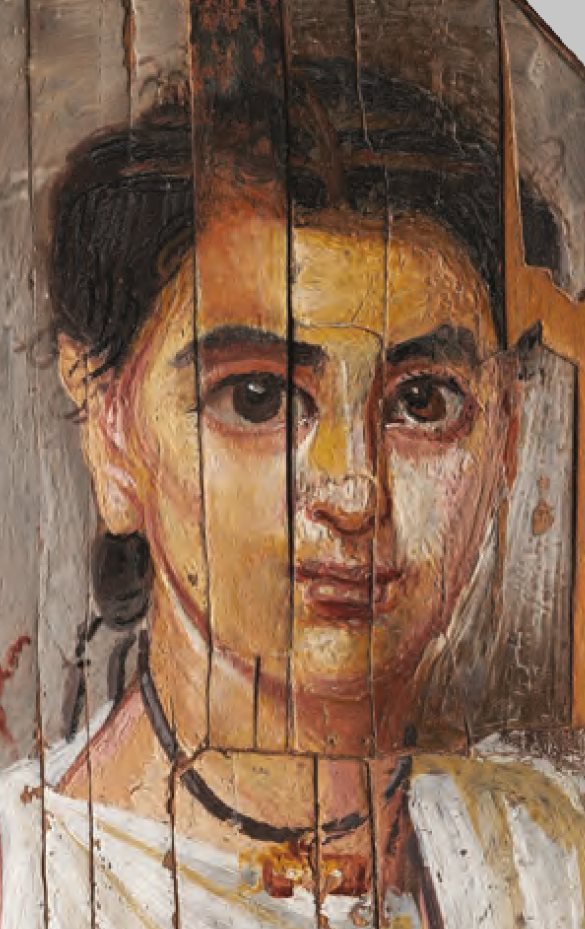Abstract
The article provides an overview of the study of a mummy portrait showing an anonymous boy and represents an attempt to analyse the artefact in the context of historical-artistic and conservatorial study. The painting from the NMW belongs to a specific group distinguished in the literature on the subject as “Fayum portraits,” which appeared in Egypt under the strong influence of Greek culture as a novel continuation of the tradition of three-dimensional mummy masks. On the basis of its individual traits, the work may also qualify for inclusion in a somewhat narrower group of portraits showing male youths (below age 14) of the elite Greek community living in Egypt. Its formal features confirm the artefact’s hitherto dating to the 2nd half of the 2nd century AD, though there remains the possibility that the date may be adjusted toward the early 4th decade of the 2nd century on account of certain analogies pointed out in the article. The portrait’s attribution cautiously connects the work to the centre of ar-Rubayat, Egypt. Technological analysis has determined that missing fragments of the original work have been replaced with fragments from a similar object, an intervention connected with the painting’s preparation for the antiquities market. The portrait’s present appearance, as well as its current condition, are the result of conservation efforts undertaken still in the 19th century.

This work is licensed under a Creative Commons Attribution 4.0 International License.
Copyright (c) 2021 Agnieszka Kijowska, Aleksandra Sulikowska-Bełczowska, Olga Syta, Barbara Wagner, Justyna Kwiatkowska, Magdalena Wróbel-Szypula (Autor)


